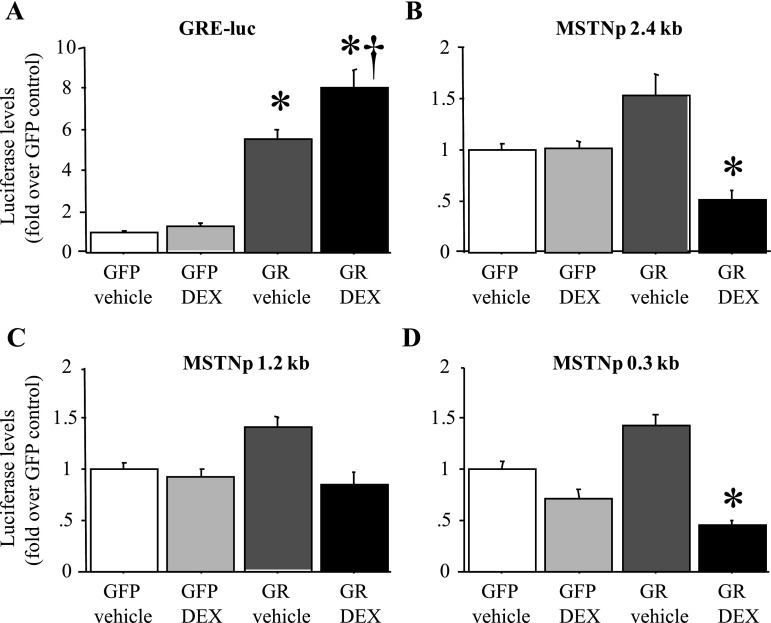Fig. 3.
The mouse MSTN promoter is minimally responsive to Dex treatment in vitro. A: activity of a glucocorticoid response element-luciferase (GRE-luc) “sensor” plasmid in response to green fluorescent protein (GFP) cotransfection and vehicle treatment, GFP cotransfection and Dex treatment, glucocorticoid receptor (GR) cotransfection and vehicle treatment, and GR cotransfection and Dex treatment. All values were normalized to the average of the GFP-cotransfected, vehicle-treated control. The GRE-luc construct responded to GR cotransfection alone and with Dex treatment. B–D: activity of the 2,400 bp (B), 1,200 bp (C), and 300 bp (D) mouse MSTN promoter-luciferase reporter plasmids in response to GFP cotransfection and vehicle treatment, GFP cotransfection and Dex treatment, GR cotransfection and vehicle treatment, and GR cotransfection and Dex treatment. All values were normalized to the average of the GFP-cotransfected, vehicle-treated control. The mouse MSTN promoter constructs were minimally responsive to GR cotransfection alone and were not increased by GR cotransfection with Dex treatment. Bars in all panels represent means ± SE for n = 3 separate experiments with 6–8 wells per experiment. *Statistically significantly different from GFP-cotransfected, vehicle-treated control, P < 0.05. †Statistically significantly different from GR-cotransfected, vehicle-treated control, P < 0.05.

